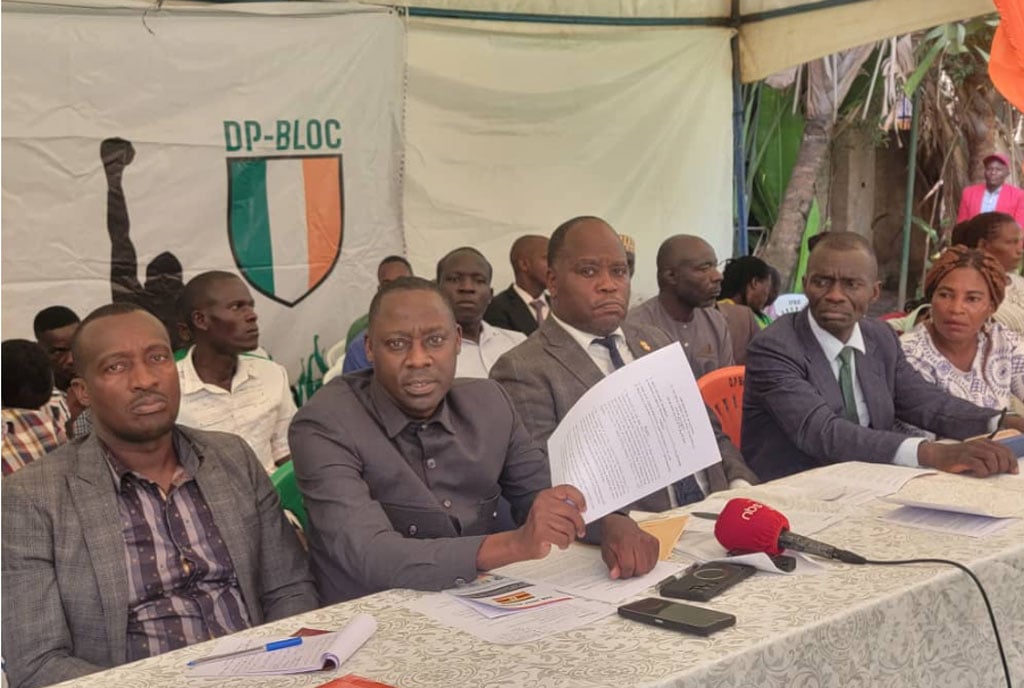Prime
How a skillful Asian tailor weaved the first Gomesi

Left to right: Sylvia Nayebare, Mariam Naigaga, Rebecca Kadaga (First Deputy Prime Minister), Judith Nabakooba (Lands minister) and Nabilah Naggayi Sempala in gomesis. PHOTOS/FILE
What you need to know:
In this 12th installment of our series marking the golden jubilee of the Asians’ expulsion, Faustin Mugabe traces the origin of gomesi, the attire that was first adopted in Buganda before it gained a foothold in other parts of the country, popularised by British educationist, Alfreda Allen, the founding headmistress of Gayaza High School.
The Gomesi fabric weaved through the skillful hands of an Indian tailor has transcended different cultural identities across the country and it is today accepted as the national female dress.
It is largely worn during local and traditional functions in central and eastern Uganda, and some parts of the north.
Since the 1970s, it has become a custom for Ugandan female sports personalities to wear the Gomesi during parades at international sports events such as the Olympic Games and Commonwealth Games.
So, how was the Gomesi introduced in Uganda? If the Indian tailor AM Gomes had not travelled to Uganda, the Gomesi would perhaps have never been integrated into our cultural psyche. The first Gomesi was tailored in 1906 or thereafter and was named after A. M. Gomes, the pioneer Indian tailor.
Mr Gomes arrived in Uganda in 1905 from India and settled at Kamwokya, then a small village on the edge of Kampala. Today, it is an overpopulated suburb of Kampala City with offices, residential homes and a desultory slum.
The Catholic priests, who in 1897 imported the first sewing machine into the country from France, concentrated on tailoring the Kanzu for local chiefs and catechists. By the time it was introduced in Uganda, the Kanzu, a male simple white, loose-fitting ankle-length clothing was quite popular at the East African coast – where Indians, Arabs and Europeans docked before trekking into the interior.
Indian tailor, Gomes sews first “Gomesi”
The attire was first adopted in Buganda before it gained a foothold in other parts of the country, popularised by British educationist, Alfreda Allen, the founding headmistress of Gayaza High School.
When Gayaza High School was established in 1905, the pioneer female learners—not more than 10 in number, under the tutorship of Allen, wore a cloth, known in Buganda as a Suuka, which was traditionally a long female wear wrapped around the body and fastened by a string and later a sash around the waist to prevent it from falling.
To avoid the Suuka from falling, it would be tacked under the armpit, which disrupted students while writing or doing others activities besides leaving shoulders bare. This fashion was the traditional way Baganda women wore the Lubugo made from the bark cloth many years before Western clothes were imported into the country.
Soon, Allen devised an idea to have a better wear for the learners. She approached a Goan (Indian) tailor who had recently arrived in Kampala. It is said that Allen gave the dress style to Gomes to sew the uniform dress.
However, another theory says that Gomes, offered a better neckline which was open and square in shape as opposed to Allen’s proposal—the closed neckline. Needless to say, the dress which became the first Gagaza High School uniform became very popular in Buganda Kingdom before spreading to eastern Uganda.
Men around Kampala and the adjacent areas, who could afford to buy a cloth did and took to Gomes, to sew dresses for their wives, which appeared in resemblance to the Gayaza High School female learners’ uniform. Because the fashion and the dress had no name, the consumers used a local lexicon ‘ekiteteyi kya gomesi” translated as “Gomes’s dress” to refer to the dress. Soon, the Gomesi became a source of admiration and popular dress for the Baganda women.
As the dress became popular, affordable and was associated with the elite girls’ school, it was given another moniker “Bondingi”, a corrupted word for boarding. To this day, the dress that was first sewed and worn as a school dress uniform is either known as “Bondingi” or “Gomesi” in Uganda.
Gomes’s brother speaks about his invention under a story titled: “Mr Gomes is not sure” in the Uganda Argus newspaper of April 29, 1967. He writes: “In an interview yesterday, Mr C. M Gomes [young brother of Mr A. M Gomes] said in 1908 when he came to Uganda, he found his elder brother, Mr A. G Gomes [who came in 1905] making Busuti, but he could not say whether it was his elder brother who really originally designed the dress. He said although he did not remember Miss Alfred Allen vividly, he admitted that their shop “Gomes and Bros” was making school uniforms for Gayaza High School and other schools.”
The Uganda Argus further writes: “There was a possibility that Miss Allen had met his elder brother before he (Mr. C.M Gomes) came, but he could not dismiss it all together. Mr Gomes, who continued running the shop after his elder brother died in 1928, said although the Busuti was already worn by some women in the 1908, he believed that it became a national dress after the coronation of Daudi Chwa II when his queen (Chwa’s wife) wore it. Mr Gomes is very proud to remember that it was he who made the Busuti, which the queen wore on the coronation day.”
In 1914, King Chwa II celebrated 10 years since he was crowned the Kabaka (king) of Buganda. Ugandans since 1902 used to commemorate the King of the British Empire Coronation Day.
Thus, it is not clear, which coronation day Mr Gomes meant. That notwithstanding, the Gomesi has a cultural bond that ties Uganda to India.



